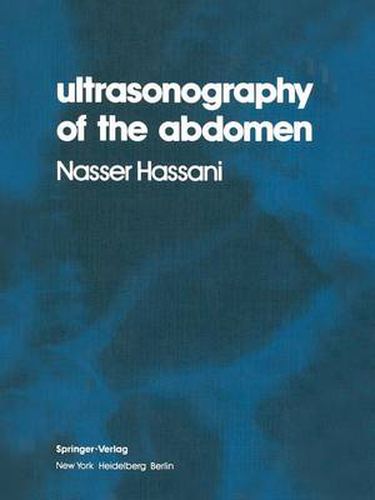Readings Newsletter
Become a Readings Member to make your shopping experience even easier.
Sign in or sign up for free!
You’re not far away from qualifying for FREE standard shipping within Australia
You’ve qualified for FREE standard shipping within Australia
The cart is loading…






This title is printed to order. This book may have been self-published. If so, we cannot guarantee the quality of the content. In the main most books will have gone through the editing process however some may not. We therefore suggest that you be aware of this before ordering this book. If in doubt check either the author or publisher’s details as we are unable to accept any returns unless they are faulty. Please contact us if you have any questions.
by Dr. Jan. J. Smulewicz Ultrasound imaging has reached a stage of sophistication where by diagnostic information can be gained without discomfort to the patient and with complete absence of morbidity and mortality. The procedure is quick, safe, noninvasive and in many instances can supersede and obviate more time-consuming procedures requiring catheterization, injection of a contrast material, and radiographic imaging. In obstetrical problems the danger of ionizing radiation to the fetus is eliminated. In debilitated and very ill patients this simple and painless method becomes the procedure of choice. Unique features of ultrasound equipment allow for pinpoint local ization oflesions and direct visual guidance of percutaneous puncture techniques for aspiration and biopsy. The accuracy of ultrasound guided punctures and the absence of side effects make this modality far superior to percutaneous invasive techniques performed with other imaging systems. Renal cyst puncture and amniocentesis are but two of the procedures in which ultrasonic guidance is the method of choice. v Dr. Hassani has throughly explained and carefully explored the wide variety of exam inations available with ultrasound. The large volume of material and the clear interpre- tion makes this book of great interest to all of the medical profession. In addition to the existing methods available for diagnostic in terpretations, this method of noninvasive diagnosis should find its way into every hospital or center where good medical care is provided. JanJ. Smulewicz, M.D.
$9.00 standard shipping within Australia
FREE standard shipping within Australia for orders over $100.00
Express & International shipping calculated at checkout
This title is printed to order. This book may have been self-published. If so, we cannot guarantee the quality of the content. In the main most books will have gone through the editing process however some may not. We therefore suggest that you be aware of this before ordering this book. If in doubt check either the author or publisher’s details as we are unable to accept any returns unless they are faulty. Please contact us if you have any questions.
by Dr. Jan. J. Smulewicz Ultrasound imaging has reached a stage of sophistication where by diagnostic information can be gained without discomfort to the patient and with complete absence of morbidity and mortality. The procedure is quick, safe, noninvasive and in many instances can supersede and obviate more time-consuming procedures requiring catheterization, injection of a contrast material, and radiographic imaging. In obstetrical problems the danger of ionizing radiation to the fetus is eliminated. In debilitated and very ill patients this simple and painless method becomes the procedure of choice. Unique features of ultrasound equipment allow for pinpoint local ization oflesions and direct visual guidance of percutaneous puncture techniques for aspiration and biopsy. The accuracy of ultrasound guided punctures and the absence of side effects make this modality far superior to percutaneous invasive techniques performed with other imaging systems. Renal cyst puncture and amniocentesis are but two of the procedures in which ultrasonic guidance is the method of choice. v Dr. Hassani has throughly explained and carefully explored the wide variety of exam inations available with ultrasound. The large volume of material and the clear interpre- tion makes this book of great interest to all of the medical profession. In addition to the existing methods available for diagnostic in terpretations, this method of noninvasive diagnosis should find its way into every hospital or center where good medical care is provided. JanJ. Smulewicz, M.D.